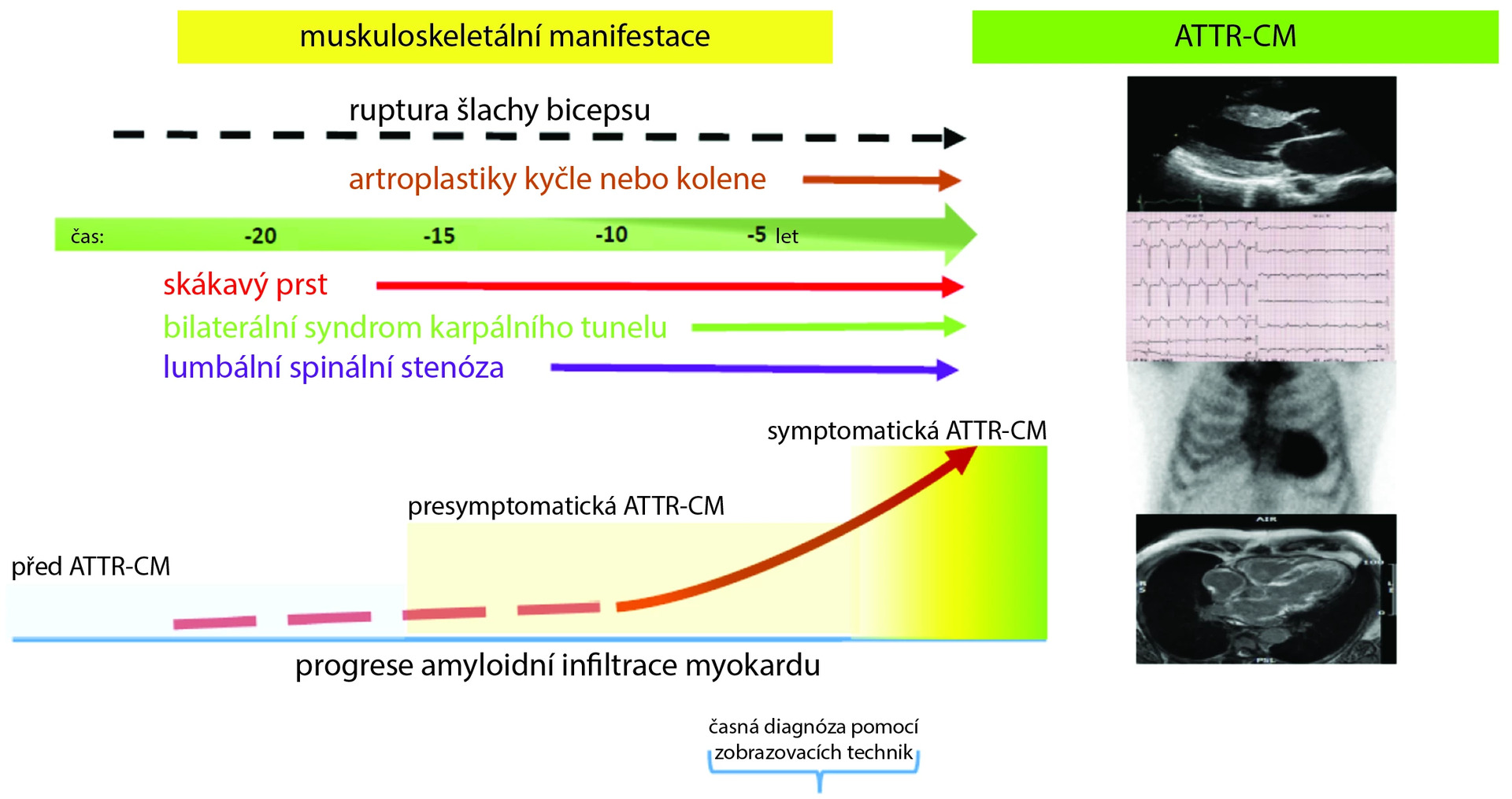TTR amyloidosis – at the crossroads of cardiology and orthopedics
In wild-type transthyretin amyloid cardiomyopathy, extra-cardiac symptoms occur in addition to cardiac symptoms. Common and characteristic orthopedic manifestations include bilateral carpal tunnel syndrome, spinal canal stenosis in the lumbar region, or atraumatic rupture of the m. biceps brachii tendon. These extra-cardiac symptoms often precede the actual heart involvement. Recognizing them can thus increase diagnostic suspicion for cardiac amyloidosis and help in the timely establishment of the correct diagnosis and initiation of specific treatment. For example, even a rheumatologist or orthopedist can direct an elderly patient with an otherwise unexplained constellation of musculoskeletal symptoms to cardiology examination early, thereby significantly improving the patient's prognosis.
Underdiagnosed cardiac amyloidosis
Transthyretin amyloid cardiomyopathy (ATTR-CM) is caused by extracellular deposits of misfolded transthyretin (TTR) transport protein in the myocardium. In addition to the inherited variant, wild-type (wt) ATTR, also known as senile ATTR, caused by the breakdown of TTR tetramers at an older age is much more common. When massive accumulation of amyloid fibrils occurs in the heart muscle, their removal is practically impossible and the patient experiences rapid and irreversible deterioration of heart function with a median survival of 3.5 years.
Historically, ATTR-CM could only be diagnosed by proving amyloid fibrils in an endomyocardial biopsy sample, but recent advances in imaging techniques now allow for non-invasive diagnosis with high specificity . This progress has led to an annual increase in new cases, and wtATTR-CM is beginning to be considered the most common cause of heart failure with preserved ejection fraction of the left ventricle (HFpEF) in older patients. Despite recent advances in diagnosis and therapeutic options, ATTR-CM is often diagnosed late or may not be detected at all.
Warning signs when suspecting ATTR-CM
In a significant number of patients, amyloid deposits form not only in the heart muscle but also in the musculoskeletal soft tissues, including tendons, ligaments, and joint cartilage. This leads to the development of a characteristic set of symptoms and manifestations, known as red flags, which can precede heart infiltration by several years (see Fig.).
Among the red flags are, for example, the presence of bilateral carpal tunnel syndrome, bilateral rupture of the m. biceps brachii tendon, or lumbar spinal stenosis. Warning signs may also include a history of total hip or knee arthroplasty, rotator cuff problems, or the so-called trigger finger.
Fig. The development of cardiac amyloidosis from musculoskeletal tissue involvement to myocardial infiltration. In the presymptomatic phase of ATTR-CM, musculoskeletal symptoms are a useful warning signal allowing early diagnosis using specific and sensitive imaging techniques.

Conclusion
The presence of amyloid deposits in ligaments, tendons, and joint cartilage has been observed in various orthopedic conditions in many studies. The most common type of deposits was TTR fibrils. Musculoskeletal manifestations of ATTR precede obvious cardiac symptoms by 5–15 years. The awareness of extra-cardiac symptoms among cardiologists and the combination of orthopedic clinical manifestations among orthopedists, along with interdisciplinary collaboration, is crucial for the early referral of a patient with suspected transthyretin amyloidosis to a specialized center where specific treatment can be initiated.
(este)
Source: Perfetto F., Zampieri M., Bandini G. et al. Transthyretin cardiac amyloidosis: a cardio-orthopedic disease. Biomedicines 2022; 10 (12): 3226, doi: 10.3390/biomedicines10123226.
Did you like this article? Would you like to comment on it? Write to us. We are interested in your opinion. We will not publish it, but we will gladly answer you.
